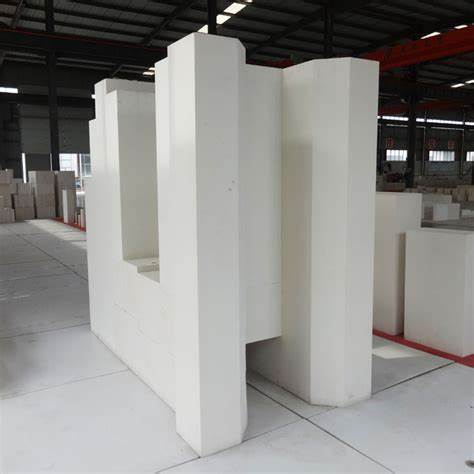How to judge the quality of fused bricks?
In high-temperature industries such as metallurgy, salamin, and cement, fused bricks are widely used in key furnace linings due to their high density, excellent high-temperature resistance, and slag corrosion resistance. However, the quality of fused bricks on the market varies greatly. If the purchase is not judged correctly, it will not only affect the service life, but also may bring safety hazards. So, how to quickly judge the quality of a fused brick?

Fused brick appearance inspection
- Dimensions: Use professional measuring tools, such as calipers and tape measures, to measure the key dimensions of the length, width, height, thickness, atbp., of the fused bricks in strict accordance with relevant standards or contract requirements, with an allowable error of ±1mm.
- Surface defects: Carefully observe whether there are cracks, holes, sand holes, missing corners, and edge loss on the surface of the fused bricks. Tiny cracks may gradually expand during use, reducing the strength and service life of the bricks; holes and sand holes will affect the density of the bricks and weaken their resistance to erosion and scouring.
- Color uniformity: Good quality fused bricks are usually more uniform in color after oxygen blowing. If the surface color is significantly different and appears dark and blue, it may mean that there are problems in the mixing and smelting of raw materials, resulting in uneven composition, which in turn affects the performance of the bricks.
Physical and chemical properties testing
- Density test: Generally speaking, fused bricks with larger and more uniform density have denser internal structures, and their strength and corrosion resistance are relatively good. The density of fused bricks can be measured by the drainage method or pore density meter and compared with the standard density range of this type of fused brick.
- Hardness test: Use hardness testing equipment, such as a Mohs hardness tester, to test the hardness of fused bricks. Fused bricks with higher hardness have better wear resistance and can be used more durable in environments with material scouring and friction.
- Corrosion resistance evaluation: Determine the chemical composition of fused bricks through chemical analysis methods to understand their tolerance to specific chemicals. Simulated corrosion resistance tests can also be carried out to immerse fused brick samples in specific corrosive media for a certain period of time, observe their mass changes, surface corrosion conditions, atbp., and evaluate their corrosion resistance.
- Thermal performance test: Detect thermal performance indicators such as thermal expansion coefficient and thermal conductivity of fused brick. The coefficient of thermal expansion should be within an appropriate range. Too large or too small may affect its performance in high temperature environments. The thermal conductivity has different requirements depending on the specific usage scenario and must meet the corresponding standards.

Production process and manufacturer inspection
- Production process: Advanced production process is the key to ensure the quality of fused bricks. Understand the manufacturer’s production process, such as raw material selection and pretreatment, smelting equipment and process parameters, molding methods, heat treatment processes, atbp. The quality of fused bricks produced with advanced equipment and reasonable processes is more guaranteed.
- Manufacturer reputation: Choose fused bricks produced by manufacturers with good reputations. You can understand the manufacturer’s production capacity, quality control system, and after-sales service level by checking the manufacturer’s qualification certificate, three-body certification, customer evaluation, performance cases, atbp. Manufacturers witha good reputation usually have stricter control over product quality and can provide more reliable products and technical service support.
Internal structure inspection
- Nondestructive testing: Use ultrasonic testing, X-ray testing and other nondestructive testing methods to check whether there are cracks, looseness and other defects inside the fused bricks. These internal defects may not be noticeable in appearance, but will seriously affect the performance and service life of the bricks.
- Microstructure analysis: Observe the microstructure of fused brick through microscopes and other equipment to understand their grain size, distribution, and phase composition. Uniform and fine-grain structure usually means better performance.
- Static corrosion resistance test: Take samples from each batch of products, immerse the fused brick samples in a constant temperature glass liquid at 1500℃, and measure the corrosion after 36 hours with precision instruments to accurately measure whether its performance indicators are qualified
 Rongsheng Refractories Pabrika
Rongsheng Refractories Pabrika
WeChat
Scan ang QR Code sa wechat